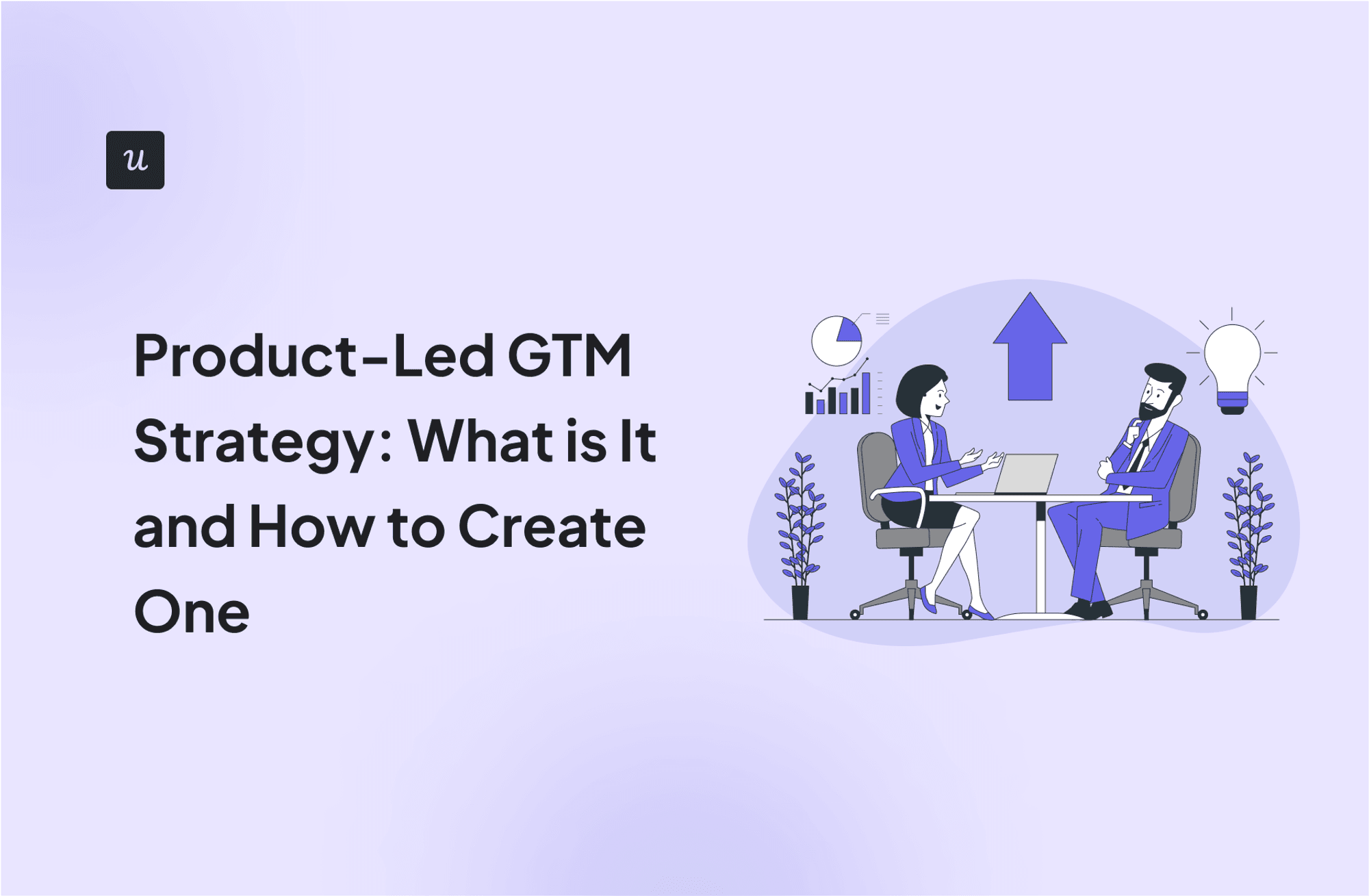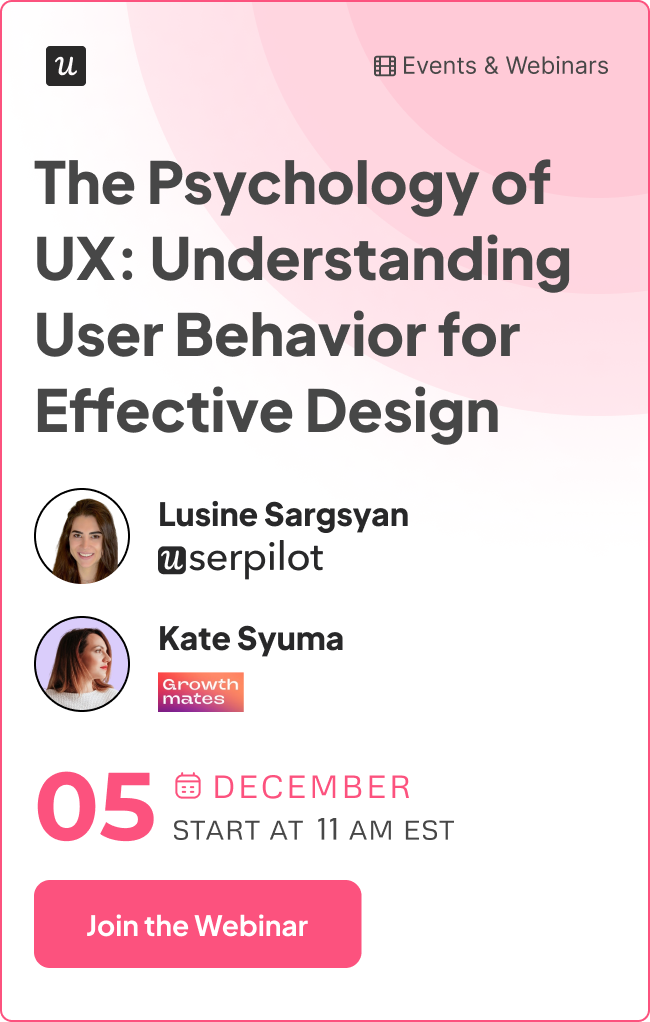Product-Led GTM Strategy: What is It and How to Create One

Looking to implement a product-led GTM for your brand?
With the right approach, the product-led model can help you attract and retain customers almost effortlessly. Most SaaS buyers are used to the PLG model, so you’ll be creating systems that appeal to their needs.
Sounds exciting? Let’s dive into the practical steps to take and start reaping the benefits of product-led growth.
What is a GTM strategy?
A go-to-market (GTM) strategy is a comprehensive plan that outlines how a company will launch a new product into the market.
It covers everything from identifying the target audience and crafting marketing messages to establishing sales channels and pricing strategies.
The goal of a GTM strategy is to ensure a successful product launch by minimizing risks and maximizing the chances of market acceptance.
Product-led GTM strategy vs a traditional GTM strategy
Both strategies aim to achieve the same result, but the approach differs. Here are the main differences between a product-led and the traditional sales-led GTM strategy:
- Conversion drivers: In a product-led GTM strategy, the product itself is the primary driver of customer acquisition and conversion. PLG companies invest in R&D to build products customers will enjoy using, then offer a free version or limited trial that helps new users experience the value firsthand. In contrast, traditional GTM strategies prioritize outbound sales and marketing efforts to attract and convert customers. This involves extensive lead generation through various customer acquisition channels such as email campaigns, content marketing, and paid advertising.
- Self-serve vs. direct customer interactions: PLG strategies create intuitive experiences that allow users to sign up and explore the product independently. The approach leverages interactive in-app tutorials, self-serve support, chatbots, and other forms of support to ensure customers don’t get stranded. On the other hand, the traditional model is heavy on 1:1 customer interactions. This includes sales development reps scheduling personalized product demos, consultations, and follow-up calls with potential customers.

PLG vs. Sales-led growth.
What are the benefits of a product-led GTM strategy?
Running a product-led GTM strategy comes with many benefits, but here are four of the most important:
Lower customer acquisition costs
In a product-led model, the product itself does the heavy lifting in attracting and converting customers.
Free trials and intuitive onboarding experiences allow potential users to explore the product’s value on their own, eliminating the need for expensive sales demos and marketing campaigns.
SaaS companies typically spend millions on traditional customer acquisition strategies, but a product-led growth strategy ensures you spend less for more.
Efficient resource utilization
PLG ensures resources that would otherwise be allocated to extensive marketing campaigns and a large sales force can instead be invested in product development, user experience enhancements, and automated support tools.
This shift in focus optimizes operational efficiency and ensures efforts are concentrated on building a product that continuously attracts and retains users. As a result, PLG companies can achieve significant growth while maintaining lean operations and effectively utilizing resources.
Shorter sales cycle
The traditional approach involves lengthy sales pitches and consultations between a salesperson and a few decision-makers in the organization.
However, with the PLG model, end users can explore the platform independently and use self-serve resources to answer any burning questions. This considerably shortens the cycle and leads to faster product adoption.
Is the product-led GTM approach right for you?
Not sure if you should adopt PLG? The model is for you if you need scalability and faster customer activation.
However, neither PLG nor the sales-led approach exists in a vacuum—the best GTM strategy often combines both models.
Here’s what that looks like:
Integrate sales-led motions into your existing self-serve model
PLG strategies often prove more effective when targeting the down market, where self-service models and lower price points are typically preferred.
If your product caters to mid-market or enterprise segments, it’s best to implement some sales-led tactics.
For example, you can have salespeople reach out to users after they complete your self-serve onboarding. This will help you convert more customers faster.
Additionally, if your product has a steep learning curve, a simple self-serve onboarding flow might not be sufficient. Having a salesperson walk users through a demo might be more effective.
Integrate self-serve motions into your existing sales-led strategy
If you currently operate a sales-heavy strategy, consider adding PLG to remove barriers and scale faster.
A few things you can start with:
- Offer free trials so potential customers don’t have to wait in line to receive product demos—particularly if you receive a large number of inquiries for trials.
- Invest in self-serve support—think comprehensive product documentation, interactive tutorials, and knowledge bases. These will help existing and potential users to troubleshoot issues and find solutions independently.
- Equip your sales team with product usage data and customer feedback. This will enable them to have more personalized conversations with potential customers, address specific pain points, and demonstrate how the product can solve their unique challenges.
Product-led GTM strategy examples
Let’s consider a few product-led growth examples. Feel free to adopt any of the strategies:
Implement SSO option for self-serve users
Single Sign-On (SSO) reduces friction during sign-up and login, helping users get straight to what they want.
Some companies implement complex sign-up flows to collect user data. However, this approach can frustrate potential customers and lead to lost opportunities.
Instead, allow users to sign up quickly and easily. Then, use engaging flows to collect their data after they’ve signed up

Deliver personalized in-app experiences during onboarding
After the new user has their foot in the door, it’s time to learn more about them and deliver personalized onboarding experiences.
One of the most effective ways to do this is to use a welcome survey to greet users and ask about their roles, previous experience with similar tools, and jobs to be done.
Remember, you’re still interested in keeping things as seamless as possible, so don’t burden the user with too many questions. Ideally, the survey should appear only on one page.
If you need to ask questions that will take more than one screen, implement gamification like progress bars to help users stay motivated.

Once you’ve collected relevant data, use it to segment users and provide highly personalized onboarding flows.
Use product data to tailor sales interactions across the customer journey
Track behavioral data, survey responses, demographic properties, NPS scores, feature usage, and customer journey milestones.
This helps you identify high-opportunity areas where you can contextually prompt users to book a demo.
For example, you can trigger a modal when a new user interacts with a feature most relevant to their use case:

If you offer free trials or a free version of your tool, multiple people from the same company may try it out, so focus on key decision-makers based on their roles rather than reaching out to everyone.
Another important segment to target is users who complete your free trials without upgrading to premium.
Offer a demo call during which someone from your sales team can highlight the product’s value proposition and address any objections they might have.

Example from Appcues: After the trial period, the company offers an extension in exchange for installing the Appcues SDK. It also triggers a demo offer for users who might need an agent to answer their questions.

Automate contextual upgrades based on product usage data
Remember, the goal of product-led growth is to unlock progressive value as users get comfortable with your product.
So, have multiple feature gates across the user journey that prompt customers to upgrade from free to paid, and from a basic plan to a higher-tiered plan.
For example, you can limit usage on specific key features. Then, create an upsell flow that triggers immediately when a user reaches the limit.
Such contextual prompts tend to yield high conversion rates and help you win more paying customers.

A/B test upgrade messages to drive conversions
If you’re not getting your desired conversion from your upgrade prompts, it’s possible the messaging, design, or offer doesn’t resonate with your users.
Use tools like Userpilot to create A/B and multivariate tests, see which version converts more, and stick to it. For example, you can test gifs vs. micro videos in your upgrade messages, then choose the best-performing format.
Side note: Test one element at a time based on what you think is significant. Multiple tests at a time will lead to overlapping results that will confuse you.

Analyze customer journey data and iterate to boost revenue growth
Conduct funnel and path analysis to understand how users navigate various stages of the customer lifecycle. Take note of important conversion areas and friction points where users get stuck.
After gathering enough data, work with your customer success and sales teams to develop targeted in-app guidance, such as tooltips, hotspots, and interactive walkthroughs.
This personalized assistance will empower users to overcome friction, discover valuable features, and ultimately achieve their desired outcomes with your product.

Conclusion
In the end, a product-led GTM strategy is about putting the customer at the heart of everything you do.
By providing exceptional value and creating an effortless user experience, you’ll not only attract and retain customers but also build a community of passionate advocates who will help your brand reach new heights.
Ready to implement product-led GTM for your SaaS? Book a call with our team to discuss your needs and see how Userpilot can help.


